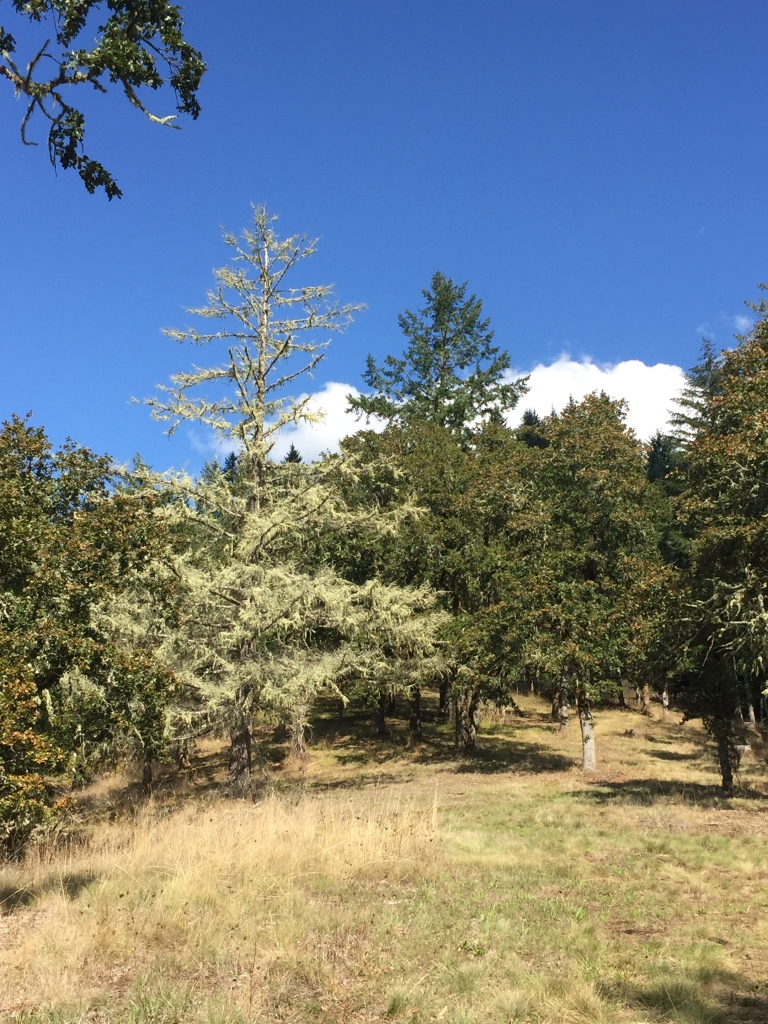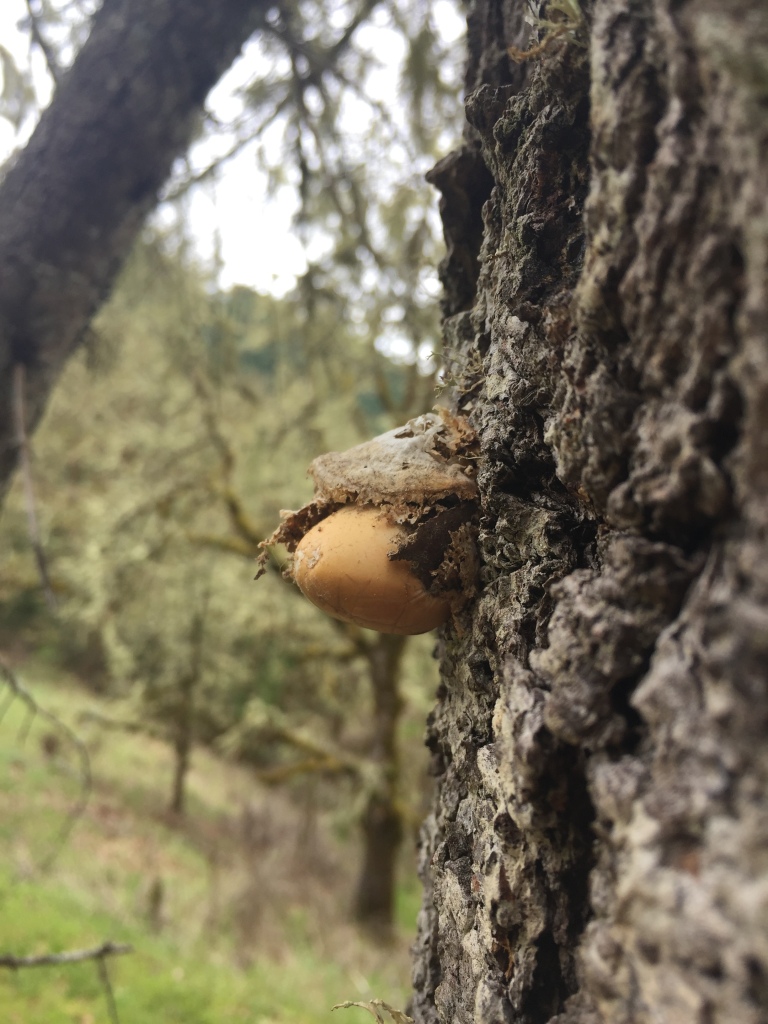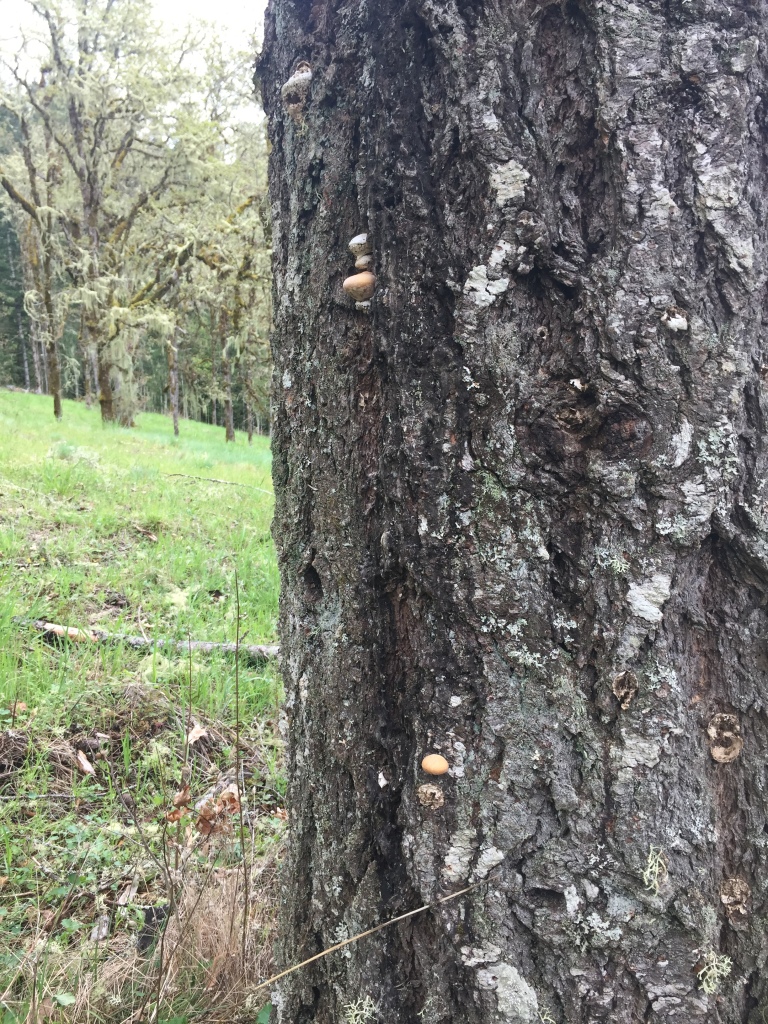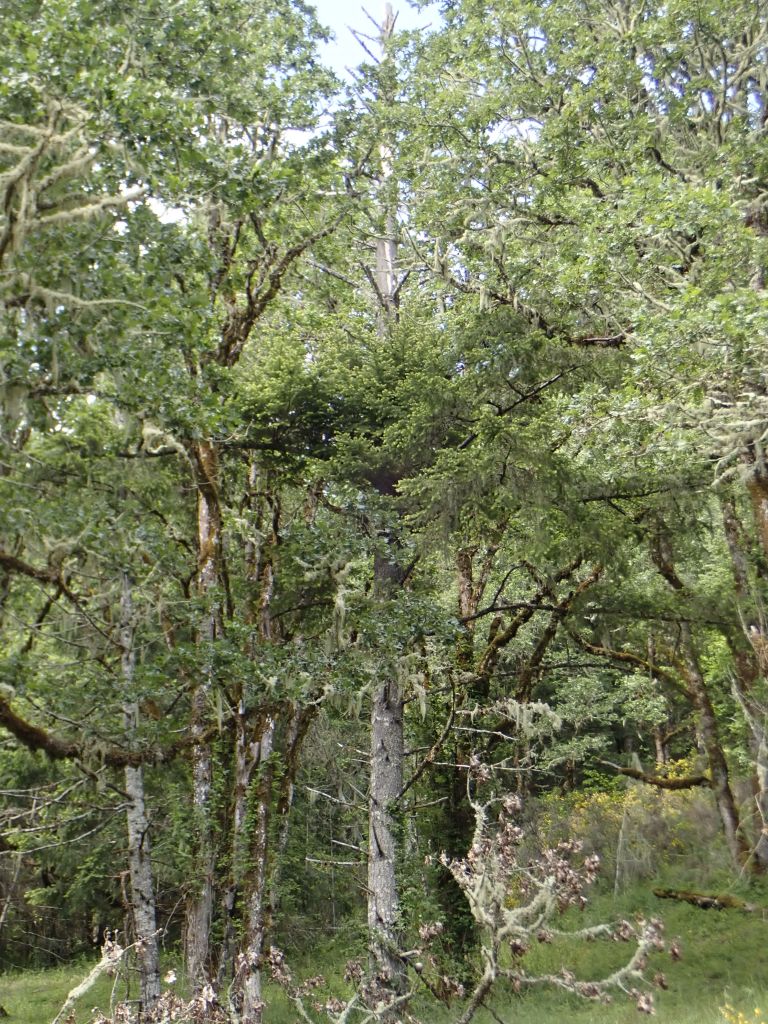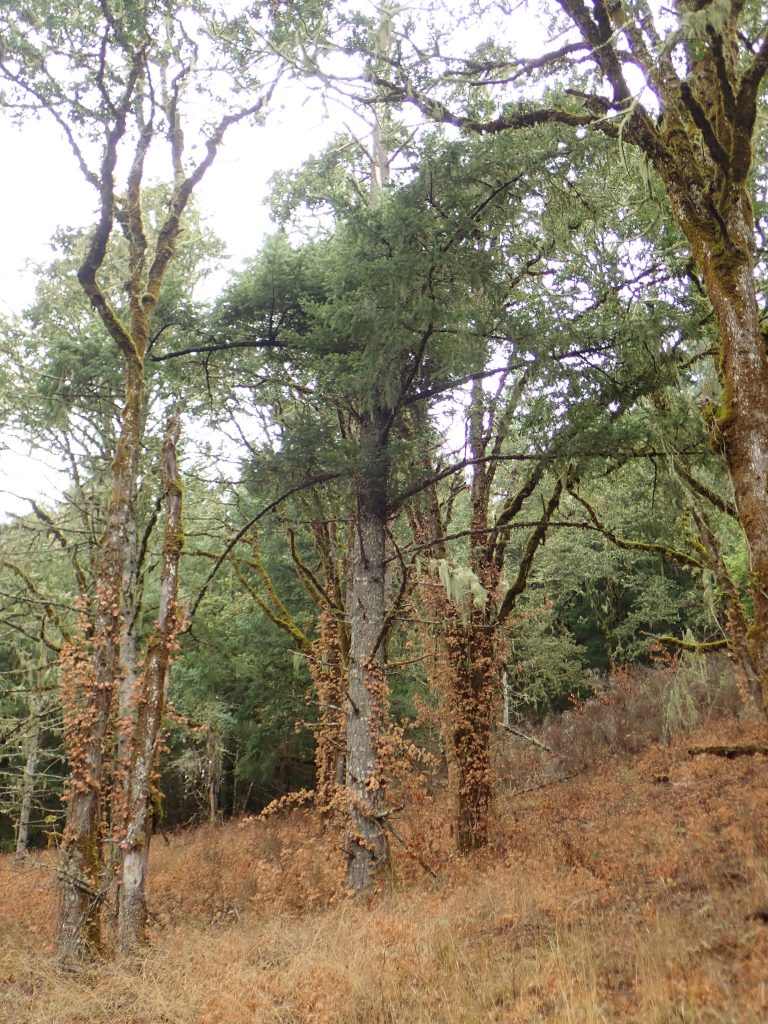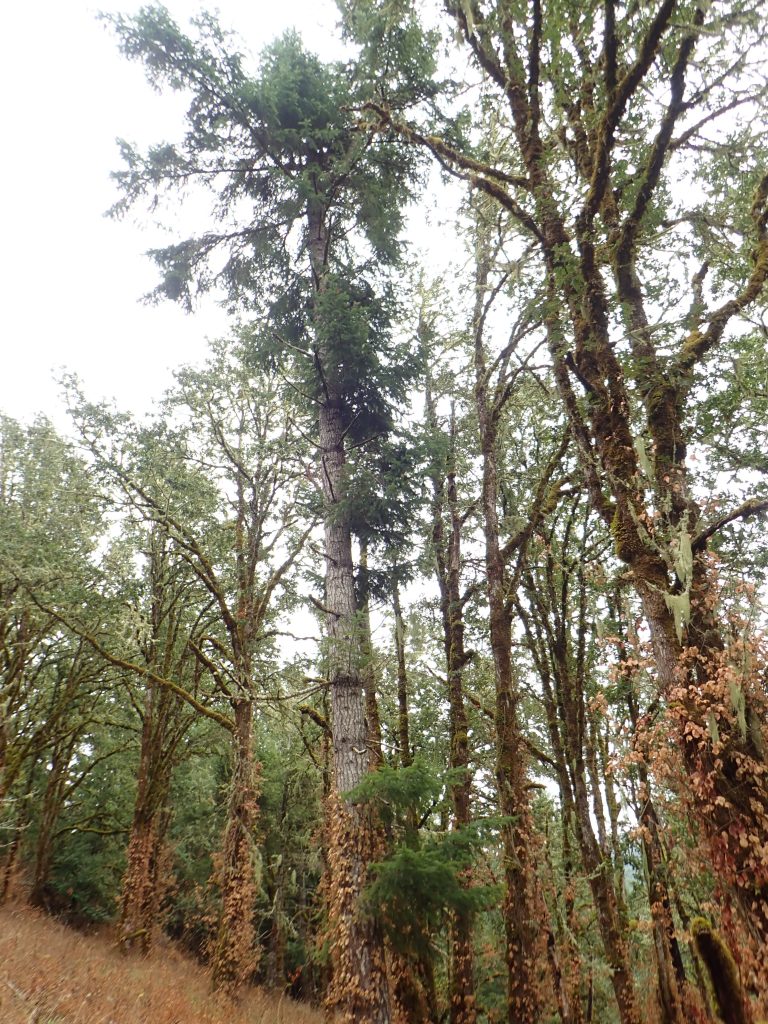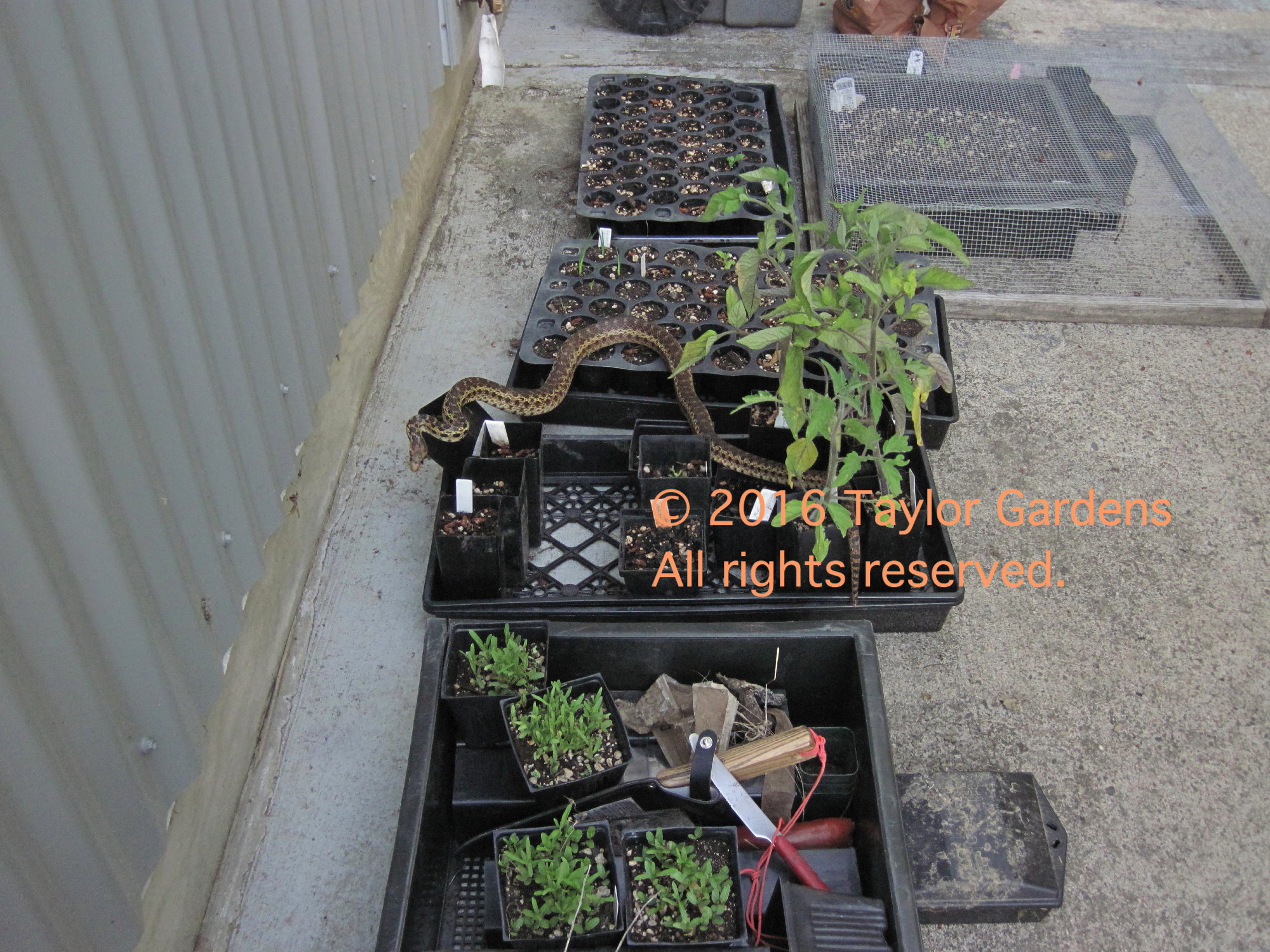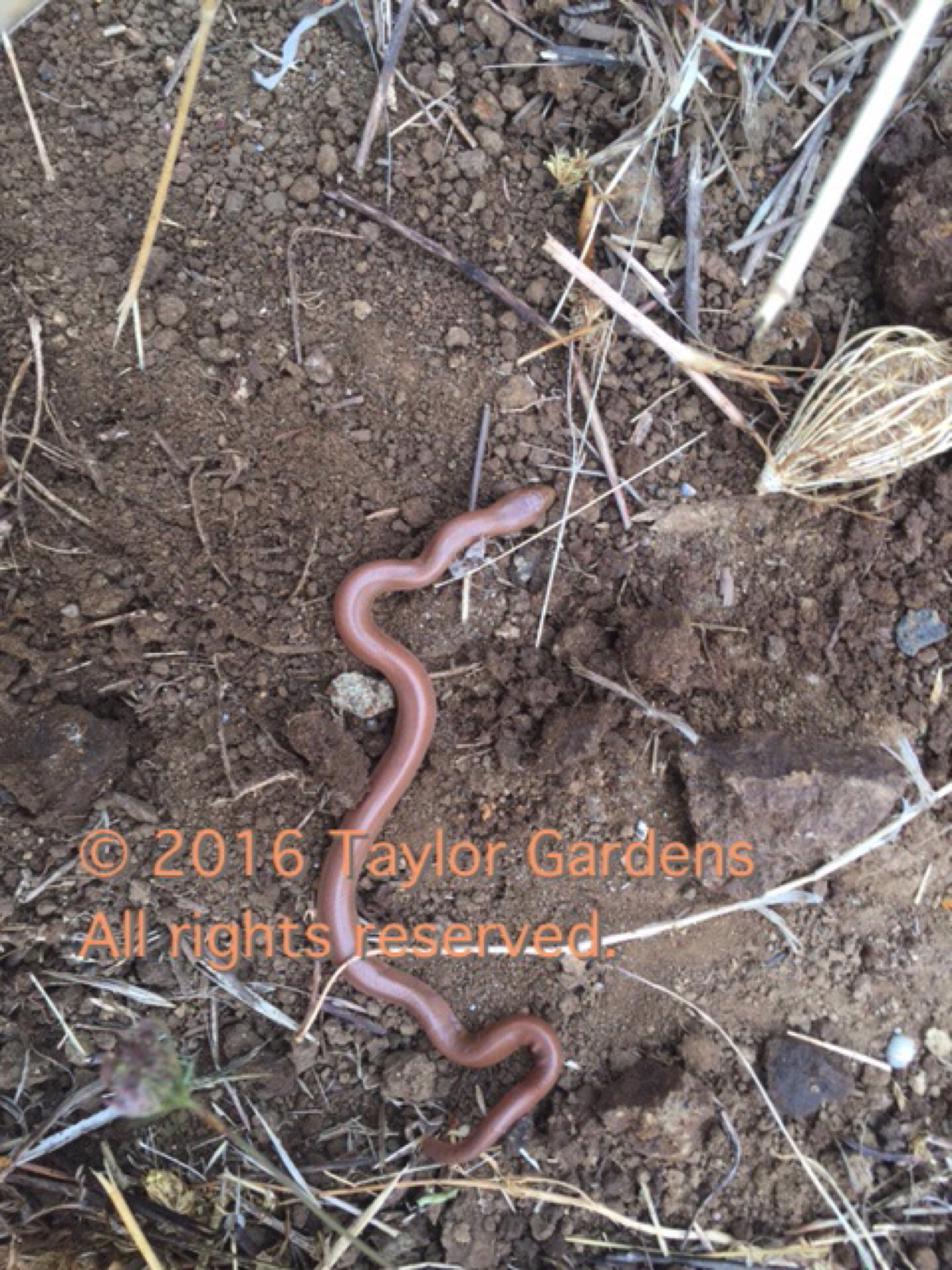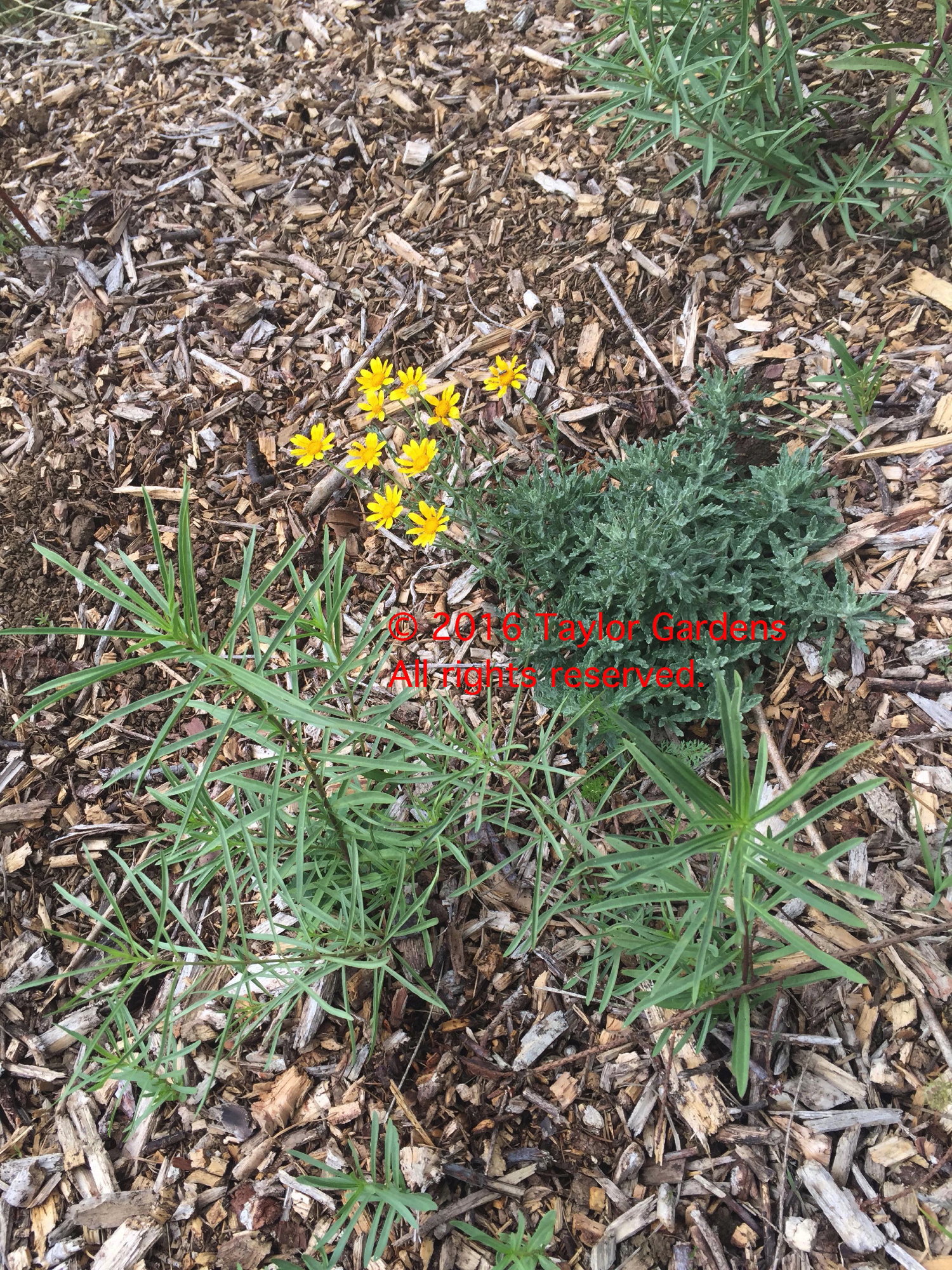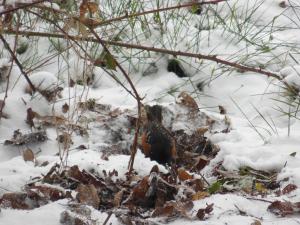Beginning this week, I’ll post a few of my old favorites from months and years gone by.
It’s winter 2013 here on the edge of the Oregon Coast Range, the fog has rolled in after unseasonable cold weather, and now the skies are dripping – a good time to look at our beautiful lichens.
Mostly dormant during the long dry summer, any bit of moisture brings the neon greens of nitrogen-rich Lobaria pulmonaria (lungwort) popping out of the background, inviting us to look closer at all the clothing on the trees and logs, ground and rocks. Lobaria and Usnea lichens make a nice orange to orange-brown dye for wool which imparts a distinctive fragrance and, usually moth proof characteristics!
Here is my short look at some of the charismatic lichens of our woods, originally posted in December of 2010.
Lichens are so…likable!!
Although very important, they are under-appreciated. The spongy, moist, fungus-friendly winter is dark and depressing to us mammals, but it’s high season for lichens.
That grey-green color of the oaks in the GVJournal masthead? Lichens!
Here’s are galleries with some fun facts.

Oak branch with a load of assorted lichens
Lichens are incredibly diverse and able to grow in extreme environments. Their chemistry is important to the ecosystems where they grow. For example, they are an important source of nitrogen in forests, and in arid lands, they conserve valuable topsoil. But to do their job, they need undisturbed substrates to grow on.
They also provide an environment for many organisms to exist – tiny arthropods and invertebrates that keep nutrients cycling in the ecosystem.
Why away from cities? Because lichens absorb all their nutrients and moisture directly from the air, they are sensitive to air pollution. This quality is so specific, scientists use them to map air quality and pollution levels. They can also concentrate some metals and radiation and be hazardous to consumer.
In cities pollution-tolerant lichens predominate, some less tolerant ones are distorted or rather small compared to lichens in fresh, clean air. Several of the lichens on the tree branch above, and the two below are very sensitive to pollution, and also need very moist air so they can function. The high humidity in the coastal NW promotes the growth of large showy lichens in clean air zones like mature and old-growth forests.

Lobaria pulmonaria – “lungwort”

Pseudocyphellaria anomala – “netted specklebelly”
-
Some people are under the impression that the “load” of lichens is damaging to trees and shrubs, but this is not the case.
They use plants as a place to grow but there is no evidence of damage. In fact the massive increase in surface area may be one reason why forests are able to extract and transfer appreciable amounts of moisture from “fog-drip” to watersheds even when it’s not actually raining.
-
The colorful common names of lichens indicate their longstanding interest to us. Many are important to a number of wildlife species, and to humans historically and in modern times.
Food, camouflage, dyes, and antibiotics are among the uses that other life forms have for lichens. The long strands of Old Man’s Beard and other Usnea species are collected to extract its chemicals which have antibiotic properties. It also protects animals that use it for nesting material.

Some medium long Usnea longissima
The alga is able to photosynthesize, producing carbohydrates which are then channeled to the fungal partner. Interestingly, if the algal partner is cultured separately, the carbs hardly “leak” at all. The fungus makes it possible for the alga(e) to live in places it normally would not survive. The fungi and algae each look completely different individually, and only take on their lichen form when together.
Although the association is termed symbiotic, it appears that it’s not an equal partnership. Lichenologists consider the fungus to be the controlling partner “farming” the alga or algae.
Even though we’ve used them for millenia, there’s always something new to learn about lichens. Scientists are studying some extra fungi present whose exact function is unclear.
This can happen very quickly. If you spray a dry lichen with water, it will absorb moisture and change color immediately. This is a sign it is active.
In fact, lichens need alternate wetting and drying to cycle carbohydrates back and forth between the fungal and algal partners.

Dry Summer Lichens – bumpy leafy one is Lobaria pulmonaria

The same Lobaria species when it’s moist
-A Gallery of Gopher Valley Lichens click to view-
A Gallery of Gopher Valley Lichens
This slideshow requires JavaScript.
Thanks to lichenologist Katherine Glew (Univ of Washington) for teaching me about lichens. I can remember some of it.
Lichens of North America, by I.M. Brodo, S.D. Sharnoff & S. Sharnoff, and Macrolichens of the Pacific Northwest, by B. McCune and L. Geiser
